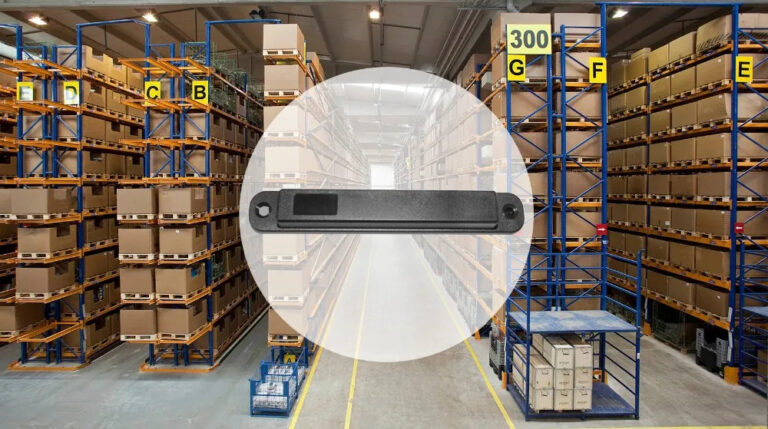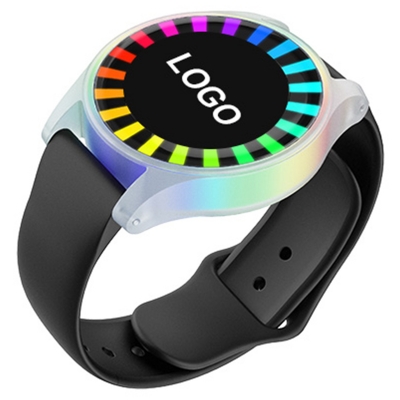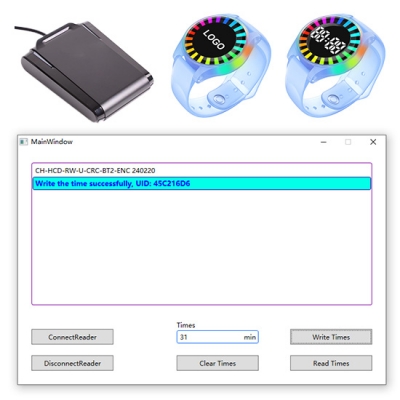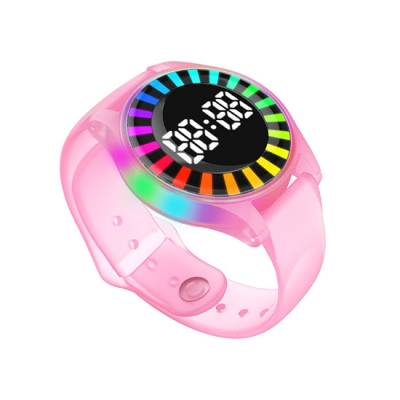Códigos de barras vs. RFID
Códigos de barras
Los códigos de barras codifican datos en líneas imprimibles o una cuadrícula. Se necesita un lector de códigos de barras para decodificar los datos, que suelen ser un número de referencia asociado a la información de una base de datos. Sin embargo, los códigos de barras requieren una línea de visión clara, se dañan fácilmente y solo se pueden escanear uno a la vez. Almacenan información limitada y son visibles para cualquier persona, lo que los hace menos seguros.RFID
La identificación por radiofrecuencia (RFID) utiliza campos electromagnéticos para identificar y rastrear automáticamente las etiquetas adheridas a los objetos. Las etiquetas RFID pueden almacenar más datos, suelen ser reescribibles y se presentan en varios tipos: pasivas (alimentadas por el lector, sin batería), activas (alimentadas por batería) y semipasivas.
Una ventaja clave de la RFID es su velocidad: puede leer cientos de etiquetas simultáneamente, incluso si son invisibles. Los lectores RFID de ultraalta frecuencia (UHF) pueden escanear artículos a una distancia de hasta 10 metros. Estas etiquetas duraderas son resistentes a productos químicos, humedad y calor, que pueden dañar las etiquetas de código de barras.
RFID también admite cifrado y protección con contraseña, lo que lo hace ideal para industrias reguladas y contra la falsificación.

Costo
Las etiquetas RFID son más caras que los códigos de barras; las etiquetas pasivas cuestan entre $0.10 y $0.30 cada una si se compran al por mayor; las etiquetas activas son aún más caras. La infraestructura, incluyendo lectores e integración, aumenta la inversión inicial. Sin embargo, los datos muestran consistentemente que la precisión del inventario supera el 95% con RFID. El ahorro en mano de obra, la rapidez en el conteo de inventario, la reducción de errores y la reducción de robos ayudan a la mayoría de las empresas a obtener un retorno de la inversión en menos de dos años.Estudio de caso: Comercio minorista
Tras implementar RFID, Macy's redujo las tasas de falta de stock en un 30%, aumentó la precisión del inventario de aproximadamente un 60% a más del 95% y logró la entrega el mismo día de los pedidos en línea. Los revolucionarios beneficios operativos y financieros de la visibilidad a nivel de artículo compensaron rápidamente el costo inicial.Cuándo elegir RFID
Se recomienda el uso de RFID en lugar de los códigos de barras en las siguientes situaciones:- Artículos grandes o de alto valor
- El escaneo en línea de visión no es práctico
- El inventario o los activos requieren recuentos/movimientos frecuentes
- Entornos hostiles (húmedos, industriales o al aire libre)
- La seguridad y la trazabilidad son fundamentales (por ejemplo, en el sector farmacéutico y aeroespacial).
- Su objetivo es la automatización o la integración de IoT
Además, diversas opciones de integración permiten ahora imprimir códigos de barras o códigos QR en productos RFID, lo que los hace ideales para el sector minorista. Por ejemplo, Etiquetas de joyería Meihe Tienen chips RFID incorporados y están impresos en papel térmico que admite la impresión de códigos de barras.
















